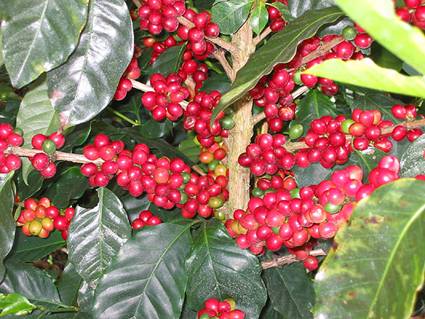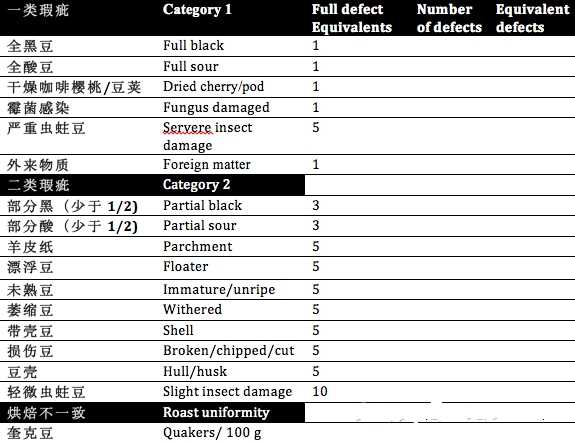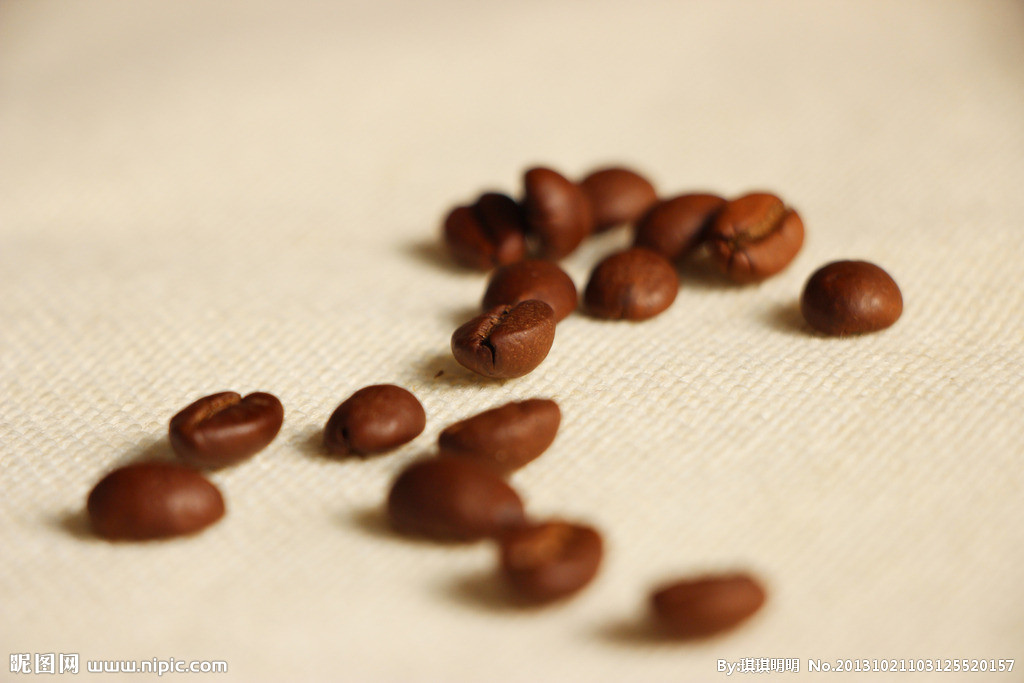Boutique coffee beans: introduction to Raminita La Minita Coffee
Country: Indonesia
Product name: Raminita Ikanda
Production area: Lake Toba, Lintong,Sumatra
Particle size: 18 mesh
Treatment method: semi-washing
Altitude: 1000-1800 m
Variety: Arabica
Iskandar coffee is produced in Medan, North Sumatra, near Lake Lake Toba. Through La minita's exquisite sun drying technology and three manual screening procedures, Ikanda Coffee has achieved its unique and perfect flavor. Because of its labor-intensive production process, it can only provide less than 1000 packets of coffee per year, and these strict and complicated procedures are all designed to enable La minita customers to enjoy the highest quality coffee.
Flavor description: with obvious cream, black sugar, caramel-like flavor, the taste is solid and rich and the finish is long and slender.
The geographical environment of La minita
Hacienda La Minita Manor is located in the famous Tarrazu producing area of Costa rica. Due to its excellent geographical environment and microclimate, the beans of La Minita Manor have a more balanced and fragrant taste than coffee from other Tarrazu producing areas.
Of the 1200 acres of the total cultivated area of La Minita, 680 acres are currently under cultivation. Of the remaining 520 acres, 200 acres south of the manor serves as a natural forest reserve forbidden to grow coffee trees, while the manor is planted in the east-west direction, facing the Tarrazu River to the south and the Alumbre River to the north. The two rivers meet on the western ridge where the manor is located, and the soil is gray, yellowish brown and reddish clay rich in organic matter. Some areas of the manor reach a height of 1830 meters, but the height of the central area falls between 1250 and 1650 meters.
Although there are differences in altitude and temperature, fortunately, the cooling effect caused by the river around the manor is reduced, and the farm faces to the west and can slowly heat up in the morning and cool slowly in the evening. It is also because this unique geographical environment has formed unique advantages.
Coffee Tree species and planting of La minita
Four varieties of coffee trees, Caturra, Caturra red, Caturra yellow and Hibridoru, were planted in La Minita Manor in about 680 acres. After years of experimental statistical analysis and cup quality test, La Minita Manor decided to mainly adopt Caturra varieties and continue to retain a small number of old Hibrido varieties. Although La Minita planted about 2500 coffee trees per acre, the number of coffee trees was still determined according to geographical characteristics and coffee species. La minita Manor currently has a total of about 1.7 million trees. La Minita adopts a five-year knockout system. Every five years, the previously produced coffee trees are cut down to a height of about 50 centimeters, leaving lower branches. This practice will stimulate the rebirth of the trees. After a year of cutting down trees, two main twigs will be selected for production in the next four years. These processes are all carried out manually, with about 350000 trees trimmed each year. After three rounds of pruning, that is, 15 years, the resources of the coffee trees are almost exhausted. La Minita will move new trees from his own coffee nursery instead. The nursery is located in a well-protected place in the manor. The new trees planted in the nursery will be planted in the nursery for a year before being transplanted to the production farm. Under normal circumstances, La Minita will plant about 150000 coffee trees a year. In addition, La Minita uses fast-growing and wide-leaved "Pror" trees as coffee shade trees, which will choose different planting densities according to the demand for sunlight and temperature control in the production area, and will be adjusted according to the demand.
All the soil in the manor is tested twice a year, and based on the above-mentioned test results, decide how to fertilize the soil. La Minita Manor is very careful in using products that can increase yield, applying fertilizer about three times a year, for economic and environmental considerations and reasons. In addition, spraying some trace elements such as zinc, boron and copper on the back of the leaves can provide more nutrients and prevent diseases.
At La Minita Manor, pesticides are not used, and fortunately, the climate and altitude formed by the geographical advantages of the estate limit the number of pests to a considerable extent. Most importantly, through our careful planting and weeding techniques, the coffee trees grown by La Minita are strong and healthy, and a few pests do not have much impact on the coffee trees. At the end of the rainy season, the cherry fruit ripens, and the green cherry fruit begins to turn red or yellow. The cherry fruit ripens very slowly and unevenly, not as quickly and consistently as flowering. Therefore, the harvest work must be handled more carefully. The ripe cherry fruit will be harvested first, and the immature fruit will be left on the tree for harvest later. The fruit of a coffee tree will be harvested up to five times by La minita due to maturity, and the production season will end after the last harvest, around the end of February. After the production season, all the coffee fruits, whether ripe or immature, are picked to prepare the coffee trees for production in the coming year.
La Minita Coffee Series Baking recommendations:
Flower God: light to medium baking shows floral and drupe aromas and deep baking changes to chocolate tonality.
Conqueror: medium baking
Model student: medium to deep baking to show the flavor of Colombian black sugar bitter chocolate
Ikanda: shallow baking can show the flavor of peppermint herbs, while medium and deep baking tends to the traditional mantenin tone.

Source: Brista blog
Important Notice :
前街咖啡 FrontStreet Coffee has moved to new addredd:
FrontStreet Coffee Address: 315,Donghua East Road,GuangZhou
Tel:020 38364473
- Prev

Introduction of coffee defective bean varieties to understand the culprit that affects the quality of a cup of coffee
Coffee beans have many flaws, and there are a variety of flaws. There are many reasons for defects. Defects may affect our taste experience of coffee at different levels, and may also affect our health. However, many defects that can be clearly seen in raw beans can be quickly invisible once baked. Therefore, most of the coffee cooked beans we usually see are uniform in appearance and consistent in appearance.
- Next

Boutique coffee beans: an introduction to the classified taste of the famous coffee beans in Central America
GuatemalaLaJoyaEstate-Antigua Gem Manor Coffee GuatemalaLaJoyaEstate Central American countries: Guatemala producing areas: Antigua flavor: Antigua Gem Manor, Antigua (Antigua) is a volcanic island located in the southwest of Guatemala, three volcanoes are located in which the island is rich in volcanic soil, coupled with low temperature, low humidity and adequate sun environment at night
Related
- Guji coffee producing area of Guji, Ethiopia: Humbela, Shakiso, Wulaga
- What is the most expensive variety of Qiloso in BOP multi-variety group?
- How to store the coffee beans bought home?
- Why are Yemeni coffee beans so rare now?
- Ethiopian Sidamo all Red Fruit Sun Sun Santa Vini Coffee beans
- SOE is mostly sour? What does it mean? Is it a single bean? what's the difference between it and Italian blending?
- Is Italian coffee beans suitable for making hand-brewed coffee?
- How to choose coffee beans when making cold coffee? What kind of coffee beans are suitable for making cold coffee?
- Just entered the pit to make coffee, what kind of coffee beans should be chosen?
- Can only Japan buy real Blue Mountain Coffee? What are authentic Jamaican Blue Mountain coffee beans?

